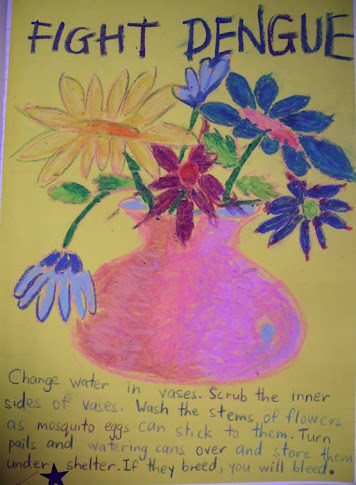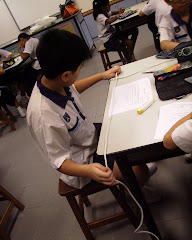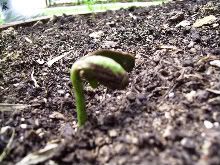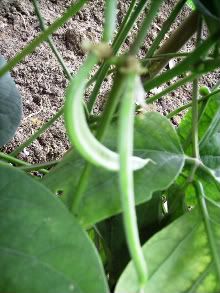Is it true that went you want to heat something, you actually put in more mass .
Is it true that when you speed something up, it has more mass?
How can you tell Einstien's Equation was even right?
Why can't you travel beyond the speed of light?
How do you make sure your thinking is the right one?
Can you tell wheter people are telling the right facts?
How can you tell the Earth is round?
How can you tell green is green, you may take what I call brown as green and being taught its green, can you tell the differents at all?
How do you tell one another out, can you even remember their voice, Why?
A fish and a fungi, a protist and an animal, a plant and a amphibians, how do you group them all?
Try these questions out, ymay look simple but do try them, remember don't stop asking questions in science question it! Thats how science actually works!
Posted by Pek Yu-Xuan Sean
How To Soar in PSLE - BTPS Way!!
Interact with complex questions / graphs / pictures to pick up valuable clues (don't highlight - just use your pen to underline words or scribble notes)
Start with Booklet A and do it meticulously with full focus - explore all 4 distractors before making final choice.
MANAGE your TIME - to score well, you need to try to finish ALL questions.
Specific answers = answers that are relevant to question.
When confused, choose any of the following strategies:
1. Ask, "What Science idea is being used in question?"
2. Pose other questions to clarify your thoughts
3. COMPARE to another set-up
4. COMPARE to a reverse situation
5. Connect to your knowledge in life (yes, you do have lots of prior / other knowledge)
6. Break down your answer in steps before crafting final answer.
Common problems with wrong answers:
*Answers are generic/vague and do not connect to that specific question
*Answers are not scientific and do not explain using Science ideas
*Answers do not make use of data provided when asked
*Answers did not make comparisons - use words like more/most etc..when asked
BTPS supports all P6 in achieving their PSLE GOALS!!
Start with Booklet A and do it meticulously with full focus - explore all 4 distractors before making final choice.
MANAGE your TIME - to score well, you need to try to finish ALL questions.
Specific answers = answers that are relevant to question.
When confused, choose any of the following strategies:
1. Ask, "What Science idea is being used in question?"
2. Pose other questions to clarify your thoughts
3. COMPARE to another set-up
4. COMPARE to a reverse situation
5. Connect to your knowledge in life (yes, you do have lots of prior / other knowledge)
6. Break down your answer in steps before crafting final answer.
Common problems with wrong answers:
*Answers are generic/vague and do not connect to that specific question
*Answers are not scientific and do not explain using Science ideas
*Answers do not make use of data provided when asked
*Answers did not make comparisons - use words like more/most etc..when asked
BTPS supports all P6 in achieving their PSLE GOALS!!
Tuesday, March 31, 2009
Thursday, March 26, 2009
New Taxonomy?
Taxonomy is the art of classifying things. A few centuries back, a naturalist, Carl Linnaeus use a binomial system of classifying living things.
This system makes use of the animal characterisitics, for example:
Aves (Birds)
Pisces (Fishes)
Mammalia (Mammals)
Amphibia (Amphibians)
Phanerogamia (Plants with conspiciuous flowers)
This system make use of a binominal representation like for humans, Homo Sapiens , with Homo as the genus (Family) and Sapiens as the species.
While, Aristotle use thier movements of the animal to classify it - For example fish is classified as the swim for movement while birds are classified as Flying animals.
1)The Linnaeus system is now prefered over most system like the Aristotle one, what distinct advantage does it have over the latter?
2)The system has it flaws too! Can you name a few?
Posted by Pek Yu-Xuan Sean
This system makes use of the animal characterisitics, for example:
Aves (Birds)
Pisces (Fishes)
Mammalia (Mammals)
Amphibia (Amphibians)
Phanerogamia (Plants with conspiciuous flowers)
This system make use of a binominal representation like for humans, Homo Sapiens , with Homo as the genus (Family) and Sapiens as the species.
While, Aristotle use thier movements of the animal to classify it - For example fish is classified as the swim for movement while birds are classified as Flying animals.
1)The Linnaeus system is now prefered over most system like the Aristotle one, what distinct advantage does it have over the latter?
2)The system has it flaws too! Can you name a few?
Posted by Pek Yu-Xuan Sean
Tuesday, March 24, 2009
Steam or Water Vapour
Before I go on the last post on the water rockets in Think and Talk Science1, if you are keen on finding out more about the question, please check the following before our last discussion:
- How are steam and water vapour (in Science) similar and different
- Are they visible?
- How are they produced?
Friday, March 20, 2009
Last Post on BBQ Char Cool
Let me sumarise what "BBQ Char Cool" have said and let' s work from there.
'It is because of high chemical potential energy that enables it to burn for so long.'
Posted by Yu Ling
' The most common types of charcoal used are lump charcoal and briquettes. Briquettes are convenient, inexpensive source of fuel. It can burn more consistenly and longer then lump charcoal but not quite as hot. Charcoal can be burnt in power stations to turn generators to produce electricity. It can also be used to cook.
The porosity of activated charcoal accounts for its ability to readily absorb gases and liquids; charcoal is often used to filter water or absorb odors. Charcoal was also consumed in the past as dietary supplement for gastric problems in the form of charcoal biscuits.'
Posted by Xin Yi
'Disadvantages of using charcoal are that it is not a clean fuel. Charcoal transport generates more ash than LPG, Kerosene and Gelfuel.'
Posted by Pauline
'From what I researched, charcoal is a blackish residue consisting of impure carbon obtained by removing water and other volatile constituents from animal and vegetation substances. The resulting soft, brittle, lightweight, black, porous material resembles coal and is 85% to 98% carbon with the remainder consisting of volatile chemicals and ash.'
Posted by Renise
Let' s stick to the instructions and give better awnswers!
'It is because of high chemical potential energy that enables it to burn for so long.'
Posted by Yu Ling
' The most common types of charcoal used are lump charcoal and briquettes. Briquettes are convenient, inexpensive source of fuel. It can burn more consistenly and longer then lump charcoal but not quite as hot. Charcoal can be burnt in power stations to turn generators to produce electricity. It can also be used to cook.
The porosity of activated charcoal accounts for its ability to readily absorb gases and liquids; charcoal is often used to filter water or absorb odors. Charcoal was also consumed in the past as dietary supplement for gastric problems in the form of charcoal biscuits.'
Posted by Xin Yi
'Disadvantages of using charcoal are that it is not a clean fuel. Charcoal transport generates more ash than LPG, Kerosene and Gelfuel.'
Posted by Pauline
'From what I researched, charcoal is a blackish residue consisting of impure carbon obtained by removing water and other volatile constituents from animal and vegetation substances. The resulting soft, brittle, lightweight, black, porous material resembles coal and is 85% to 98% carbon with the remainder consisting of volatile chemicals and ash.'
Posted by Renise
Let' s stick to the instructions and give better awnswers!
Thursday, March 19, 2009
Last Post on Porcupin
Debate on Porcupin - up to its chosen name was very animated! In particular, the observations made were objective and spot on. Answers on its physical and possible behavioural adaptations were relevant:
'When threatened, it will puff out its hairy thorns.' Posted by Nicholas King (6C)
We do know that puffing up makes organisms look larger and less vulnerable.
'The caterpillar has a fake eye on its back - the black dot - to mislead its prey that (the dot) is its eye ...' Posted by Kay Kiat
Question is "Why fake eyes?"
Finally, this comment by Marcus Chionh triggers other thoughts: 'MAYBE they do not have any spikes underside of it because they need to crawl, not curl up'
Many felt though that the absence of spikes underneath may help both actions of crawling and curling up.
We also know from our reading that caterpillars like to crawl underneath leaves as an extra precaution. Where do its usual predators come from? Mull over this as that was part of a PSLE question in 2008.
'When threatened, it will puff out its hairy thorns.' Posted by Nicholas King (6C)
We do know that puffing up makes organisms look larger and less vulnerable.
'The caterpillar has a fake eye on its back - the black dot - to mislead its prey that (the dot) is its eye ...' Posted by Kay Kiat
Question is "Why fake eyes?"
Finally, this comment by Marcus Chionh triggers other thoughts: 'MAYBE they do not have any spikes underside of it because they need to crawl, not curl up'
Many felt though that the absence of spikes underneath may help both actions of crawling and curling up.
We also know from our reading that caterpillars like to crawl underneath leaves as an extra precaution. Where do its usual predators come from? Mull over this as that was part of a PSLE question in 2008.
Last Post on Pollen - Welcome or not!
This question was fairly well debated with pupils making connections with what you have learnt, research and supported points made with examples from life around you.
The discussion on the pollination process was rich and I liked the comment by Sean Pek (6C) that flowers do know how to attract pollinators.
'I wish to explain how plants can 'lure' animals to pollinate them to the same plant, like being close to other plant so that the pollinator do not have to travel far to get more nectar, making the pollen land on the plant.'
I also think that Samuel Tay and Sean Pek below made some good points:
'Wind dispersed pollen must land on the same species of flowers to ... (fertilise the flower). Insect pollinated plants needs the help of insects to transfer the pollen grains from the anther to the stigma. For some species, if they do not land on the same type of plants, the pollen tube will not (grow). Some, however can cross breed.' Posted by Samuel Tay
'It is rare to crossbreed flowers of different genus ... if they have the chromosomes that are interchangeable, it may mix and the microgametophytes will mix with the ovum to form a seed. Finally, it seriously depends on its genus. If they are the same , most likely, there will be a baby (or egg).' Posted by Sean Pek
When we look around us, we do not see a large variety of cross-bred flowers for example. So maybe we should ask a different question: Do ovules accept all types of pollen?
Finally we thank all the curious pupils who gave us a good list of cross-bred animals - longest list went to Marcus Chionh (6G) - so my question is, "What do they have in common?'
I liked the heated argument by Ellia (6C) and comapny about cross-pollination and self-pollination. Maybe we can discuss during the next holidays!
The discussion on the pollination process was rich and I liked the comment by Sean Pek (6C) that flowers do know how to attract pollinators.
'I wish to explain how plants can 'lure' animals to pollinate them to the same plant, like being close to other plant so that the pollinator do not have to travel far to get more nectar, making the pollen land on the plant.'
I also think that Samuel Tay and Sean Pek below made some good points:
'Wind dispersed pollen must land on the same species of flowers to ... (fertilise the flower). Insect pollinated plants needs the help of insects to transfer the pollen grains from the anther to the stigma. For some species, if they do not land on the same type of plants, the pollen tube will not (grow). Some, however can cross breed.' Posted by Samuel Tay
'It is rare to crossbreed flowers of different genus ... if they have the chromosomes that are interchangeable, it may mix and the microgametophytes will mix with the ovum to form a seed. Finally, it seriously depends on its genus. If they are the same , most likely, there will be a baby (or egg).' Posted by Sean Pek
When we look around us, we do not see a large variety of cross-bred flowers for example. So maybe we should ask a different question: Do ovules accept all types of pollen?
Finally we thank all the curious pupils who gave us a good list of cross-bred animals - longest list went to Marcus Chionh (6G) - so my question is, "What do they have in common?'
I liked the heated argument by Ellia (6C) and comapny about cross-pollination and self-pollination. Maybe we can discuss during the next holidays!
Last Post for Mooncakes on the Moon
Some of you vaguely discussed the variety of mooncakes on the market - but did not delve deep enough into the facts.
There are two main types sold in Singapore, notably the brown skin classic with yolks or not and the ones covered with a soft skin called 'snowskin'.
The boxes both came from upmarket hotels and the styrofoam one came with 'snowskin' mooncakes. The elaborately decorated one is made of medium-thin cardboard and came with brown skin mooncakes and a sachet of dessicant.
Last question is therefore what is the purpose of the two types of insulators. There is a reason for the styrofoam which if compared to cardboard is a far more effective insulator. Part of the answer might lie in this statement made by Rachel Neo (6F) - 'Some of the boxes are airtight,while others are not'.
It will be good to think of the mooncakes and their 'skin' mentioned above when thinking of an explanation.
There are two main types sold in Singapore, notably the brown skin classic with yolks or not and the ones covered with a soft skin called 'snowskin'.
The boxes both came from upmarket hotels and the styrofoam one came with 'snowskin' mooncakes. The elaborately decorated one is made of medium-thin cardboard and came with brown skin mooncakes and a sachet of dessicant.
Last question is therefore what is the purpose of the two types of insulators. There is a reason for the styrofoam which if compared to cardboard is a far more effective insulator. Part of the answer might lie in this statement made by Rachel Neo (6F) - 'Some of the boxes are airtight,while others are not'.
It will be good to think of the mooncakes and their 'skin' mentioned above when thinking of an explanation.
Tuesday, March 17, 2009
BBQ Char Cool 2
It is important to differentiate coal and charcoal - fossil fuel v/s just trees that have been treated. Please also read the comments from Pauline who clearly states some of the benefits of charcoal. Also Xin Yi and Renise gave some relevant information on charcoal.
Maybe some of you can elaborate and make the differentiation clearer to the confused ones.
The comment by Yu Ling on the chemical potential energy of charcoal is well connected to the current P6 topic.
Also I agree that it's so much preferable to write in your own words to show what you understand. Short, concise comments do a better job than long explanations.
Maybe some of you can elaborate and make the differentiation clearer to the confused ones.
The comment by Yu Ling on the chemical potential energy of charcoal is well connected to the current P6 topic.
Also I agree that it's so much preferable to write in your own words to show what you understand. Short, concise comments do a better job than long explanations.
Monday, March 16, 2009
Mooncakes on the Moon 2
That was a great debate on mooncakes - errr but there is severe digression. It is important to know when to control our thoughts and get back to the focus.
Great input:
1) Insulators
2) Warm or cold moncakes
3) Material
All else is detracting from the main focus which is Science here.
No one has adressed the similarity stated by many of you: Both are insulators. Then how does one insulator differentiate form the other? Is the purpose of the insulator in both cases different?
Many discussed material used - does that have an importance besides aesthetics - please move away from that point because you are missing important Science facts here!
But most importantly, did anyone ask around or think about the main types of mooncakes available in Singapore? Please note the word "MAIN". Do they affect the types of boxes used? The long discussion of eating cold or warm mooncakes should have been such a good clue.
Finally, to say that styrofoam is probably not from an expensive restaurant is a subjective comment because it is impossible to tell just by looking at a picture. I will divulge more later.
I enjoy the chatter as only through free Talk can we clarify our own thoughts. We must be willing to change our thoughts after "listening" to others when they make sense. It is not a case of "Hear me. I'm right!' Comments that make sense have been researched and are well suported by facts and examples.
Let's focus on making our chatter productive and fun at the same time.
Great input:
1) Insulators
2) Warm or cold moncakes
3) Material
All else is detracting from the main focus which is Science here.
No one has adressed the similarity stated by many of you: Both are insulators. Then how does one insulator differentiate form the other? Is the purpose of the insulator in both cases different?
Many discussed material used - does that have an importance besides aesthetics - please move away from that point because you are missing important Science facts here!
But most importantly, did anyone ask around or think about the main types of mooncakes available in Singapore? Please note the word "MAIN". Do they affect the types of boxes used? The long discussion of eating cold or warm mooncakes should have been such a good clue.
Finally, to say that styrofoam is probably not from an expensive restaurant is a subjective comment because it is impossible to tell just by looking at a picture. I will divulge more later.
I enjoy the chatter as only through free Talk can we clarify our own thoughts. We must be willing to change our thoughts after "listening" to others when they make sense. It is not a case of "Hear me. I'm right!' Comments that make sense have been researched and are well suported by facts and examples.
Let's focus on making our chatter productive and fun at the same time.
Thursday, March 12, 2009
Pollen - Welcome or Not?
How does pollen know where to land?
Are all types of pollen accepted guests on all types of stigmas?
How about animals? What happens when a male of one species mates with the female of another species? Do we have a baby?
Are all types of pollen accepted guests on all types of stigmas?
How about animals? What happens when a male of one species mates with the female of another species? Do we have a baby?
BBQ Char Cool!!
Who doesn't love a juicy chicken wing grilled to perfection above charcoal?
What is charcoal and why is it possible for it to burn for such a long time?
What is/are the difference/s between charcoal and its original state?
I hear charcoal has many other benefits.
Tell me about some of them.
But of course there are disadvantages to using charcoal.
Suggest some possible ways of harnessing the goodness of charcoal while minimising harmful effects.
What is charcoal and why is it possible for it to burn for such a long time?
What is/are the difference/s between charcoal and its original state?
I hear charcoal has many other benefits.
Tell me about some of them.
But of course there are disadvantages to using charcoal.
Suggest some possible ways of harnessing the goodness of charcoal while minimising harmful effects.
Wednesday, March 11, 2009
Comment on THINK SCIENCE TALK SCIENCE 1
The pupils were at the Mindfest at the Science Centre.
What do you think caused the bottles to shoot up?
What do you think is coming out of the bottle?
How do you think it was formed?
What do you think caused the bottles to shoot up?
What do you think is coming out of the bottle?
How do you think it was formed?
Comment on THINK SCIENCE TALK SCIENCE 2
Observe Porcupin.
Porcupin is a caterpillar found in the school carpark.
What physical adaptations help Porcupin in evading predators?
Besides physical adaptations, how else do caterpillars behave in order to survive?
Porcupin is a caterpillar found in the school carpark.
What physical adaptations help Porcupin in evading predators?
Besides physical adaptations, how else do caterpillars behave in order to survive?
MOONCAKES on the MOON?
Subscribe to:
Posts (Atom)
Science Around Me (SAM)
SAM is a Science journal that allows pupils to express themselves in their favourite ways about Science.
SAM is another great opportunity for pupils to THINK and TALK Science in a medium that is customised to their learning styles.
SAM allows teachers to informally assess understanding of the child and clarify misconceptions in their learning.
SAM is another great opportunity for pupils to THINK and TALK Science in a medium that is customised to their learning styles.
SAM allows teachers to informally assess understanding of the child and clarify misconceptions in their learning.
Factors Affecting the Environment by Gog Ru Yan - 6G

When Ice Changes into Water by Goh Chee Yan - 5G
Do you wonder whether the mass of ice changes when it melts into water. Try this out:
1. Put a few ice cubes into a plastic bag
2. Tie the mouth of the bag tightly
3. Weigh the bag of ice cubes (if there is condensation outside the bag, wipe it dry before weighing)
4. Place the bag in the sun
5. When ice has melted, wipe the outside of the bag dry (refer to step 3)
6. Weigh the bag
You will discover that the mass of the bag remains the same!
There is no change in mass when ice melts!!
1. Put a few ice cubes into a plastic bag
2. Tie the mouth of the bag tightly
3. Weigh the bag of ice cubes (if there is condensation outside the bag, wipe it dry before weighing)
4. Place the bag in the sun
5. When ice has melted, wipe the outside of the bag dry (refer to step 3)
6. Weigh the bag
You will discover that the mass of the bag remains the same!
There is no change in mass when ice melts!!
Simple Steps to fight Dengue by Elizabeth Wu 4C









